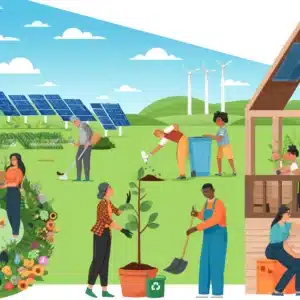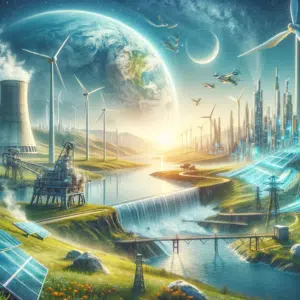Water-Saving Wonders: Discovering New Techniques for Efficient Use
In our increasingly resource-conscious world, it’s essential to know how to make the most of the water we use. New technologies and tactics are continuously being developed to help us do just that. In this article, we explore the water-saving wonders and novel techniques that promise efficient use of this precious resource. Let’s dive in!
The Significance of Saving Water
Water is a crucial part of our daily lives, but while it appears abundant, fresh, and clean water is a scarce resource. This fact underscores the need for its conservation. Especially, as population growth and climate change factors continue to weigh heavily on freshwater supplies.
New Realities: The Impact of Wasteful Water Practices
Excessive water usage has both immediate and long-term effects. These impacts range from higher utility bills to depleting reservoir capacities, and worse still, contributing to global water crisis.
Pioneering Methods for Water Conservation
Awareness of these issues has led to a surge in newfound interest in efficient water use, inspiring innovations in water-saving techniques.
Smart Irrigation Systems
These intelligent tools optimize water use in both home gardens and commercial farm lands. Through sophisticated tech systems, smart irrigation adjusts water output based on real weather data, minimizing waste while ensuring plants receive ample watering.
Domestic Water Recycling
This isn’t necessarily a new concept, but advances in filtration technology have greatly improved domestic water recycling systems. They treat and reuse water from showers, baths, and sinks, helping households considerably reduce their water consumption.
Efficient Plumbing Fixtures
Low-flow fixtures and dual-flush toilets are examples of efficient plumbing fixtures that use significantly less water per use. They are now standard in many new homes and renovations.
Efficient Agricultural Practices
Techniques such as drip irrigation, agroforestry, and soil moisture monitoring can mitigate water waste in agriculture, which is considered one of the primary water consumers globally.
The Role of Tech in Conserving Water
From easy-to-use, app-controlled home devices, to more sophisticated systems in industrial settings, technology plays a massive role in the progress of water conservation.
Digital Water Meters
These devices enable real-time tracking of water usage, paying the way for households and businesses to monitor and adjust their consumption habits.
Conclusion
As water scarcity as a global concern continues to gain traction, the need for efficient use techniques becomes more vital. Thanks to advancements in technology and growing awareness, we now have a wealth of water-saving wonders at our fingertips. Everyone, from individual households to large industries, can play a role in minimizing water waste, ensuring a more sustainable future.
FAQs
1. What are some easy ways to save water at home?
Simple measures like fixing leaks promptly, using a dishwasher instead of hand washing, and installing efficient fixtures could significantly reduce home water usage.
2. How effective are smart irrigation systems in saving water?
Smart irrigation systems are highly effective as they adjust water flow based on weather conditions, preventing unnecessary watering and hence saving water.
3. Can recycled water be used for drinking?
With advanced filtering systems, it’s possible to treat and reuse water for non-potable purposes, but it’s typically not recommended for drinking.
4. Is it expensive to install water-saving fixtures and devices?
While some devices may require an initial investment, the long-term savings on your water bills can more than offset the cost.
5. Are these water-saving techniques applicable to any region?
Most techniques can be adapted to different geographic and climatic conditions. However, it’s crucial to consider local water supply and weather patterns while choosing the most suitable method.





